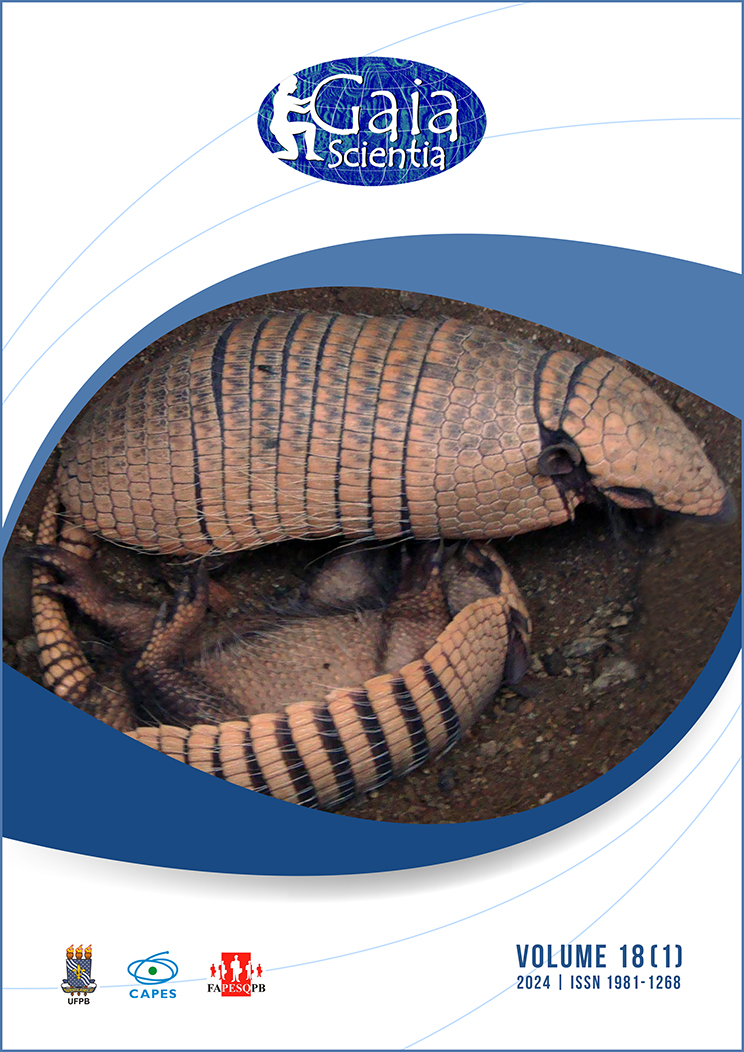Relação entre idade e correlações biológicas com a caça na Caatinga da Paraíba
Resumo
A caça é largamente estudada no Continente Africano, contudo no Brasil e, sobretudo, na Caatinga estão em baixo número. Aqui, apresentamos um estudo realizado no município de Lagoa (Nordeste do Brasil) onde entrevistamos 34 caçadores. Identificamos as espécies preferidas localmente e observamos uma frequência média de caça de 5.7 +- 3.8 days/month e forte correlação com a idade do caçador (p < 0.001). Das 70 espécies citadas para consumo, 47 são aves, 20 mamíferos e 3 répteis. A mastofauna foi o grupo de maior destaque, seguido da avifauna e herpetofauna. Dentre as famílias de mamíferos destacaram-se Dasypodidae, Myrmecophagidae e Mephitidae. Para aves, Tinamidae, Columbidae e Anatidae. Os mamíferos mais importantes foram Dasypus novemcinctus, Tamandua tetradactyla e Euphractus sexsinctus, as aves Leptotila verreauxi, Crypturellus tataupa e Crypturellus parvirostris e o réptil Salvator merianae. Identificamos que o VU e está correlacionado ao peso corporal das espécies (p < 0.001). A frequência de caça foi superior a outros estudos possivelmente por termos caçadores vivendo próximos de áreas mais preservadas e com maior disponibilidade e abundância de espécies. Nossos resultados demonstram a importância da caça na alimentação da população e a influência de fatores socioecológicos e culturais na seleção das espécies.










